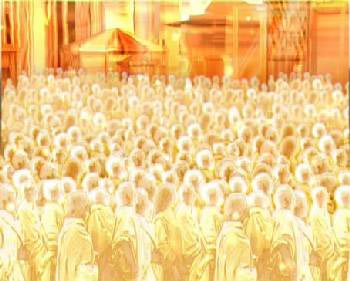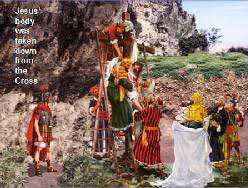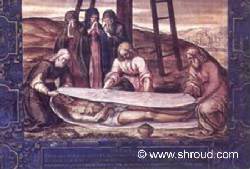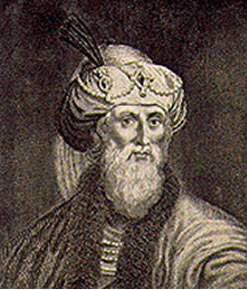The Shroud of Turin proves the Resurrection
The Resurrection of Jesus Christ, and the Shroud of Turin

Heaven, from the movies, THE FINAL FRONTIER and THE LAZARUS PHENOMENON which can be viewed on this web site.
After the Crucifixion
After the Crucifixion the disciples took Jesus’ Body down from the Cross shortly after His death at 3 pm. The disciples only had three hours during which to bury Jesus’ Body, before the start of the Passover at 6 pm.

Jesus’ Body was wrapped in a Shroud
The Bible does not give full details of exactly what happened, but we know that Jesus was buried in a large piece of cloth.
The Sindon

This word “Sindon” is NOT the same as the grave clothes (Greek: Keiriais) used to wind Lazarus’ body, which are described in John 11.44: “And he who had died came out bound hand and foot with grave clothes, (Greek: Keiriais) and his face was wrapped with a cloth. Jesus said to them, “Loose him, and let him go.”

Although the Bible is not clear about how exactly the Sindon was wrapped around Jesus’ body, many sincere Christians believe that this image here is an accurate portrayal of what actually happened.
The burial in the Tomb
The disciples then buried Jesus’ body in the Tomb. Many Christians, including ourselves, believe that the Garden Tomb in Jerusalem is the actual location where Jesus was buried. For further information on the Garden Tomb see The Amazing Discoveries of Ron Wyatt on this web site.
Jesus Christ rose from the dead

The Shroud of Turin
The Shroud of Turin is believed by many to be the actual burial cloth of Jesus Christ. It has been the source of controversy for hundreds of years!
The Shroud of Turin has been kept in a silver chest in the Chapel of the Holy Shroud in the Cathedral of St. John the Baptist in Turin, Italy, since 1578. The Shroud has been the subject of more scientific examination than any other piece of material on this planet!
The Shroud of Turin is a large piece of yellow coloured linen, with dimensions 14 feet, 3 inches long and 3 feet, 7 inches wide. On the Shroud are the faint ghostly images of a Crucified Man, with all the wounds of Scourging and Crucifixion. There are also blood marks present on the scalp, right chest wall, both wrists and both ankles. The images of the blood are real images. In other words they are photo-positive. However, the images of the crucified Man are photo-negative.
The authenticity of Shroud of Turin

Theory 1: The Shroud of Turin is one of the cleverest frauds in history, possibly created by Leonardo da Vinci (1452 – 1519). Whilst we do not doubt that Leonardo da Vinci was extremely gifted, we do not believe it would be possible for him, or anyone today, to create such an image, so great are the technical difficulties.
Theory 2: The Shroud of Turin is the True Authentic Shroud of Jesus Christ, bearing the imprints of His Scourging, Crucifixion, and Resurrection. To many people this is proof the Resurrection of Jesus Christ (3 B.C – 33 A.D)
We will explore the truth hidden in the Shroud, and hope to show you some amazing evidence. We believe that the Shroud of Turin was left behind on purpose by Jesus Christ to provide scientific evidence for His Crucifixion and Resurrection, to sceptics today, 2,000 years after the Resurrection!
We believe that the image on the Shroud was caused by a transient burst of radioactivity, at the time of the Resurrection, which scorched the linen of the Shroud, leaving behind an Image of a crucified Man – Jesus Christ! The following sections contain an explanation of the Image on the Shroud, and how we believe the Image was caused.